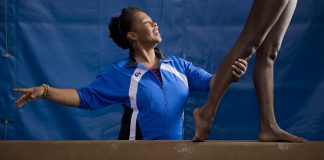With the legalization of cannabis in Canada now through its first phase, the trend of legalization in North America continues its powerful momentum. With this legalization comes unprecedented access to the substance, and naturally, there will be a growing user base inclined to try it…or simply don’t have to hide it anymore.
With that growing usership and public exposure comes a responsibility to understand what cannabis is, what it does, and its potential uses are in sports. To do just that, let’s start by taking a look into the active ingredients in the plant.
THC and CBD: Two Very Different Sides to the Pot Leaf
The psychoactive ingredient in marijuana is known as delta-9-tetrahydrocannabinol or THC. It’s responsible for the high and feelings of euphoria, increased sensory feedback (more vivid colors, louder sounds), altered pain sensitivity, altered judgement, anti-nausea and so on.
THC affects what is known as the endocannabinoid (EC) system of the brain. This system consists of specific receptors called cannabinoid (CB) receptors and the natural chemicals associated with them. Certain advocates have made the argument that having these CB receptors is proof that humans are meant to use cannabis. Regardless of the morality, the physiology is well defined - THC floods the brain’s CB receptors and replaces naturally produced chemicals.
The different effects you feel from THC are specific to the location of the CB receptors and what those receptors regulate in that specific brain region. Here’s a great overview of those locations, normal functioning, and THC’s effect on it:
A crucial sticking point with THC use is that users can develop a dependency on it. However, the other major, active ingredient of marijuana, called Cannabidiol (CBD), has not been shown to create a physical or mental dependency and is considered to be the “therapeutic component” of marijuana.
CBD’s potential benefits include reducing anxiety, depression, insomnia, pain relief, neuroprotective benefits, especially for those suffering from epilepsy and Parkinson’s, and lower blood pressure. It’s recently is being trialed to help rewire the brain circuits involved with addiction.
Like THC, CBD also works by affecting the endocannabinoid (EC) system. The main difference is that CBD affects different receptors and areas of the brain, therefore leading to different effects.
Additionally, there are some cases where synergistic effects between THC and CBD seem to be more therapeutic than CBD alone. These cases include peripheral neuropathy, multiple sclerosis, arthritis, and diabetes. Much of the research is still in its infancy—mainly because marijuana has been publicly frowned upon for so long—a stigma that was carefully crafted.
The earliest cannabis prohibition laws were instituted in border states and targeted Mexican immigrants who referred to the plant as “mariguana,” and despite the plant being called cannabis by Americans throughout the 19th century, the laws prohibiting the plant used the term marijuana in an effort to marginalize the migrant population and dictate the perception of the drug. But with the legalization and normalization, research is more forthcoming despite its Schedule I status in the United States, which are defined as “drugs with no currently accepted medical use and a high potential for abuse.”
It must be noted that like any substance that affects your chemistry, there are potential side effects such as vomiting, drowsiness, dry mouth, changes in appetite, and diarrhoea. Further, cannabis can interfere with certain medications, so make sure to consult with your primary care physician (PCP) prior to starting any sort of regiment.
With all the potential benefits, my mind naturally wanders towards whether it can be used for safe sports performance enhancement.
Can Marijuana Enhance Sports Performance?
One of the most common uses of cannabis is for pain management and, naturally, that begs the question: Can its use help high-level athletes deal with pain and improve recovery? If the alternative is using painkillers like opioids or cortisone shots, which are increasingly being found to damage cartilage in the long-term, why not give it a shot?
There’s also the question of whether THC can improve in-game performance. The problem, however, is that THC is psychoactive. Research has shown THC to inhibit motor control, balance, reaction time, and coordination. And while THC increases sensory feedback (more vivid colors, increased sense of touch, etc) that feedback is more difficult to properly utilize given the chemical’s inhibiting effects on movement.
There are numerous anecdotal examples of athletes who swear by using cannabis before games - for example, pitcher Bill “Spaceman” Lee and 1998 Olympic gold medalist Ross Rebagliati who was initially disqualified for testing positive for THC but then given his medal back because THC was not on the list of IOC banned substances - but anecdotal examples are always dangerous because there are too many other variables we don’t know. “Feeling” like you’re better at a sport while using cannabis is too subjective to apply to the general population.
All that being said, if the science behind cannabis shows tangible decreases in pain, if it’s regulated like other pain management substances AND it’s effectively out of the system before the next game so it doesn’t impair movement and coordination, it could be the next frontier for safer pain management.
NBA commissioner Adam Silver has echoed that sentiment:
“I’m very interested in the science when it comes to medical marijuana. My personal view is that it should be regulated in the same way that other medications are if the plan is to use it for pain management…but to the extent that science demonstrates that there are effective uses for medical reasons, we’ll be open to it.”
For more tepid organizations or athletes who aren’t comfortable with using THC, then a reasonable compromise is to utilize CBD for its pain relief benefits. Unlike THC, the research thus far (it’s pretty limited, mind you) has shown that CBD does NOT affect movement, balance, reaction time, or coordination. Additionally, emerging research shows it doesn’t impair cognitive performance nor does it have sedative effects.
In addition to pain management, the other immediate frontier for CBD and sports performance is in reducing excess anxiety and stress. Both negatively affect sports performance, especially in high intensity, publicly visible situations where the player becomes preoccupied with the anxiety and stress of external distractions (for more information on how stress and anxiety affect sports performance, check out either this piece or this piece). If CBD can help manage these thoughts, it follows that you have a more focused athlete who is honed in on the moment rather than distractions.
Right now, we don’t know enough about the potential consequences of CBD use, especially as it relates to athletes who have unique factors unlike most of the population, but there’s a distinct possibility that CBD could safely enhance sports performance. Professional athletes have always been on the forefront of trying to gain that edge and eye of the tiger (Ivan Drago comes to mind) so why not try CBD?
Irrespective of theoretical performance benefits, the continued legalization and normalization of cannabis is critical for discovering its concrete benefits by building the momentum toward it being reclassified and substantially increasing the scope of research. We’re on the cusp of knowing a lot more about cannabis with a lot of hard work yet to be done but if you told me five years ago that the needle had moved THIS far, I’d tell you to lay off the pipe.















